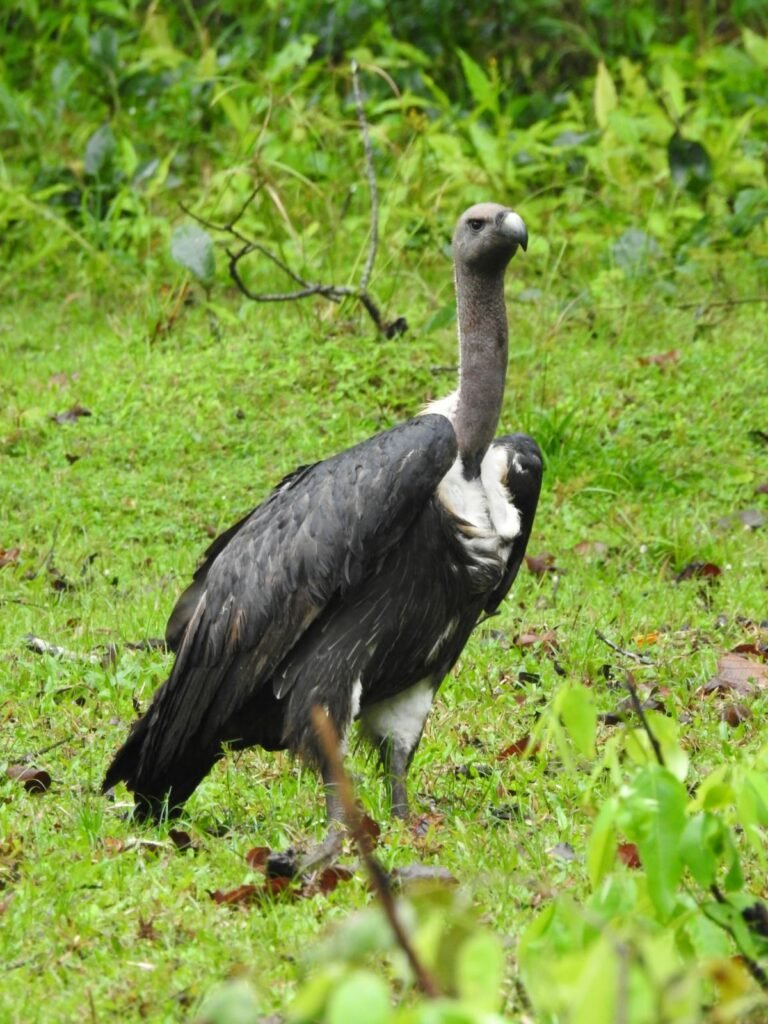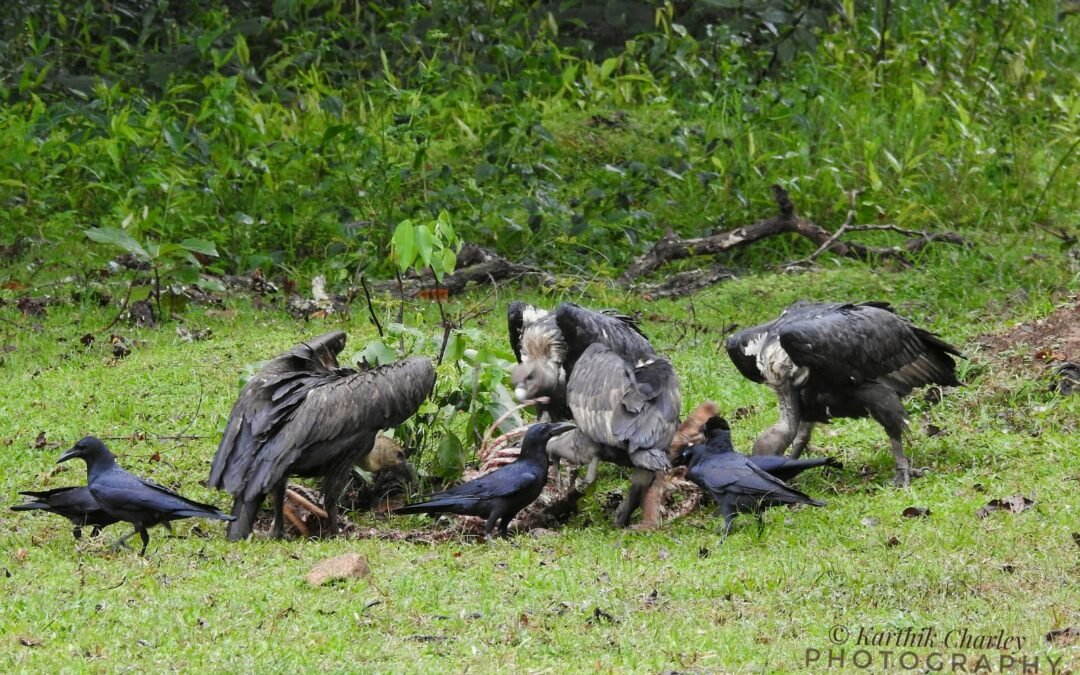Read in : தமிழ்
Among the few animals in the wild that have received some conservation efforts in Tamil Nadu is the vulture. What happened to the vultures says a lot about we human beings.
We are a generation that witnesses different scenes standing for different and opposing ideas. In the beginning of this century, we took pride in destroying important animals and birds that lived in sync with the environment. The food chain got broken as a result and that led to many living organisms becoming extinct. We are now raising our voice saying all living beings should be protected. These two events have happened not far from each other.
The disruption of the food chain and the application of half-baked scientific knowledge has pushed the vulture to the brink of extinction across the world.
By consuming the bodies of animals afflicted by the diseases, the vulture helped to control the disease. The vulture would end the lifecycle of the germs in itself, never passing it on to other living beings
The vulture is among the highest flying birds. It flies so high that even the eyes can’t see it. Yet, if it detects the presence of food in the ground, it will swoop down as a flock in a flash to feast on the dead carcasses. In a few hours, it will clean up the area by eating up all that is there to eat, right down to the thinnest piece of flesh, leaving only the bare bones, and fly away.

The vulture is among the highest flying birds. It flies so high that even the eyes can’t see it. Yet, if it detects the presence of food in the ground, it will swoop down as a flock in a flash to feast on the dead carcasses.
This was how things were up until 40 years ago. Today, it’s rare to even spot the vulture. The vulture that helped to maintain ecological balance has almost become extinct, say researchers.
Diseases that attack animals such as diphtheria, foot-and-mouth disease and diarrhea and kill them were kept under check by the vulture. By consuming the bodies of animals afflicted by the diseases, the vulture helped to control the disease. The vulture would end the lifecycle of the germs in itself, never passing it on to other living beings.
Scavenger is a degrading term for the vulture. Protector would be a better word for this benevolent bird.
Do not bury dead cattle. Leave their bodies outside villages so they become food for vultures
The name vulture is a misnomer. It denotes a bandit, a ravaging brute. In reality, the vulture is a tame creature. I have gone very close to the vulture and observed it. The vultures would come in large numbers to eat the bodies of dead cattle in my village. It was fascinating to watch them spread their wings and their social behavior.
Many farmers raised cattle for agriculture in the region I lived. If the animals died, the farmers would throw the bodies of the cattle into the woods outside the village. The next second, the vultures would descend as a flock there. They would skillfully devour the bodies, leaving no trace of flesh on the bone.
It was always intriguing how the vultures were able to spot food from high up in the sky. It was equally fascinating to see them fly away after finishing their meal. Children would touch and feel them, sometimes even hug them. The vulture would show no sign of distress or perturbation by the approach of humans. It would patiently, peacefully eat its food and fly away. We are now denied of the opportunity to see this bird endowed with rare qualities.
Many attempts are being made to save the vulture. Arulagam in Coimbatore has been making intense efforts towards vulture conservation.

It was always intriguing how the vultures were able to spot food from high up in the sky. It was equally fascinating to see them fly away after finishing their meal. Children would touch and feel them, sometimes even hug them. The vulture would show no sign of distress or perturbation by the approach of humans. It would patiently, peacefully eat its food and fly away.
S Bharathidasan of Arulagam leads this conservation exercise. It’s been a long journey without any slack. He has compiled all his experiences and observations as a book called In Search Of Vultures.
Bharathidasan says he had an interest in birds right from his childhood. He saw the vulture at the Sathyamangalam forest in 2011. There were 105 vultures in that flock. By that time, the vulture was a threatened species. Bharathidasan started his conservation efforts at that time. Arulagam did awareness exhibitions during festivals in Nilgiris, Coimbatore and Erode districts.
The primary reason for the vulture going into extinction was the use of Dicluofenac as painkiller for cattle. Arulagam demanded that this should be banned. The government substituted it with Ketoprofen in its veterinary hospitals. “We realized this drug also killed vultures. The government withdrew Ketoprofen,” says Bharathidasan.
Arulagam estimates there are some 300 vultures now in Tamil Nadu. The vulture is a Critically Endangered Species.
In recognition of his work, Bharathidasan has been feted with several awards. Puducherry Auroville Trust and the Critical Ecosystem Partnership Fund in the US have honoured him.
There are 23 types of vultures all over the world, nine in India and four in Tamil Nadu. These big birds are found in all continents barring Australia and Antartica.
Arulagam’s campaign for saving vultures foregrounds the following aspects:
- Do not bury dead cattle. Leave their bodies outside villages so they become food for vultures
- If wildlife die, they should not be buried but their bodies should be left in the open in the forests. This will benefit not just vultures but also other scavengers such as hyenas
Let’s take an oath to save wildlife that live amongst us
Read in : தமிழ்











